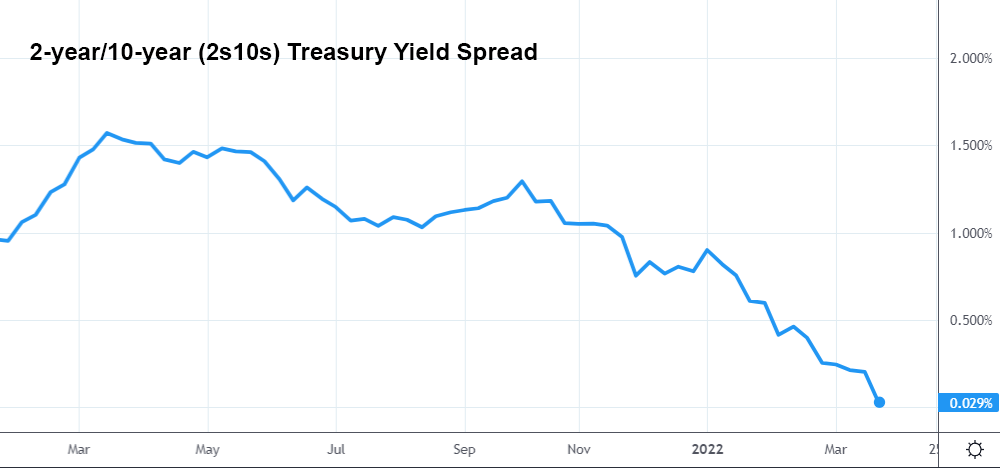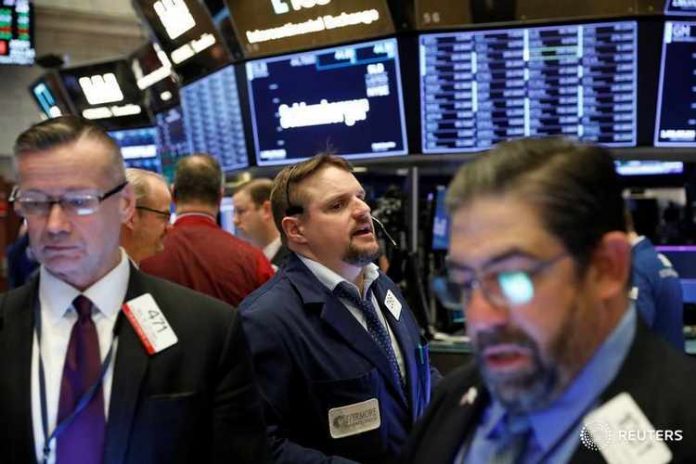Stocks roared at the open this morning before giving up some of their gains through noon. Hopes for peace between Russia and Ukraine swelled after negotiators hinted that progress had been made in talks between the two countries.
Russia’s chief negotiator Vladimir Medinsky called the ongoing discussions “constructive,” and added that he would take Ukraine’s proposals directly to Putin himself. The New York Times then reported that “the Kremlin’s spokesman, Dmitri S. Peskov, told reporters that the talks, which he said could continue on Wednesday, could be of great consequence, without offering details on the shape of a possible deal.”
Russian Deputy Defense Minister Alexander Fomin compounded the bullish enthusiasm with a statement on how Russia would reduce its military presence in response to productive talks.
“Due to the fact that negotiations on the preparation of an agreement on the neutrality and non-nuclear status of Ukraine, as well as on the provision of security guarantees to Ukraine, are moving into practice, taking into account the principles discussed during today’s meeting, by the Russian Ministry of Defense in order to increase mutual trust and create the necessary conditions for further negotiations and achievement of the ultimate goal of agreeing on the signing of the above agreement, a decision was made to radically, at times, reduce military activity in the Kiev and Chernigov direction,” Fomin said.
On the Ukrainian side of the bargaining table, negotiators confirmed Fomin’s remarks. Ukraine seems willing to maintain NATO neutrality and recognize Crimea as an independent region – two things Russia wants.
Shortly before the market opened, Russia began to withdraw its forces from Kiev and Chernihiv.
This unsurprisingly launched stocks higher at the open today. A few hours later, however, US Secretary of State Antony Blinken dashed hopes for peace when he said that he had not seen signs of “real seriousness from Russia” in regard to negotiations with Ukraine.
Then, shortly before noon, Medinsky noted that this morning’s de-escalation didn’t necessarily suggest that a ceasefire would soon follow. Thus far, talks have yet to produce any concrete results despite Fomin’s assurance that the Russian military pullback was done to “increase mutual trust” in negotiations.
In other words, barely anything has actually changed in Ukraine. And if talks deteriorate again (like they have several times now), Russia could very easily take another stab at Kiev. This isn’t helped by recent footage that’s surfaced showing Ukrainian soldiers torturing Russian POWs.
It’s highly unlikely that this behavior is widespread, however even one isolated incident may be enough to sour negotiations.
And as the “will they, won’t they” Russia/Ukraine talks continued, a far more sinister danger emerged for bulls:
The market’s most-watched yield spread (2s10s) is now on the precipice of inverting.

The 2s10s plunged today, falling to just 0.029% after the 2-year Treasury yield surged while the 10-year Treasury yield sunk. The 5s30s inverted yesterday for the first time since 2006. It seems now that it’s only a matter of time before the 2s10s inverts as well.
“With the Fed set to hike into restrictive territory, the curve will invert,” said Morgan Stanley economist Seth Carpenter yesterday.
“As has always been the case in the past, markets will debate whether an inversion presages a recession. A policy mistake that causes a recession is clearly possible, but our baseline is that an inversion without a recession is more likely.”
Carpenter will be proven right if the Fed “chickens out” and calls an end to the rate hikes in the next few months. If the Fed keeps hiking, however, a recession is virtually guaranteed. Historically, yield curve inversions as the result of a hiking cycle have always resulted in a recession.
Because of this, bulls are starting to hide out in value and financial stocks, which typically beat the general market during tightening cycles.
But if the Fed goes all-in on hiking, these sectors probably won’t rise. They’ll simply fall less than the broader indexes do.
That’s considered a “win” for the buy-and-hold investing crowd. Pockets of active traders, on the other hand, have already cashed out of equities by now. More will join them as the yield curve inverts further.
So, as tempting as it may be to remain fixated on Ukraine, investors need to instead focus on the yield curve. The 2s10s is on track to invert by tomorrow morning. If it does, the market may not react favorably.
And that’s potentially a big problem with stocks looking vastly overbought in the short-term following several weeks of runaway gains. Which, in the event of a 2s10s inversion, could come to a screeching halt.







